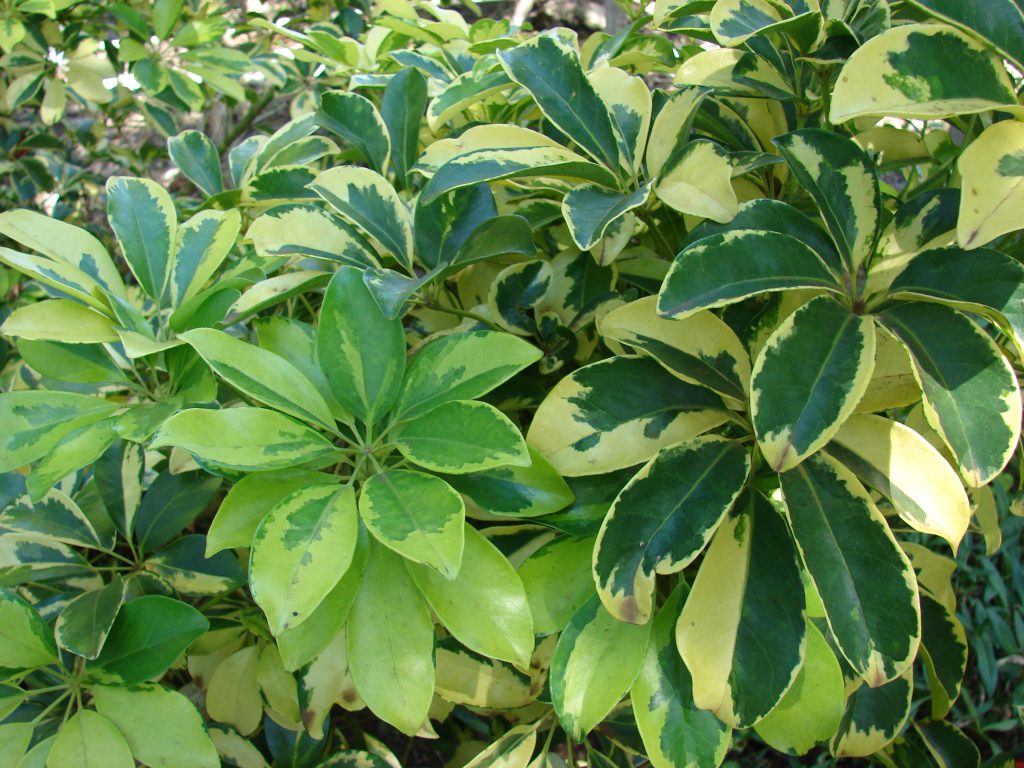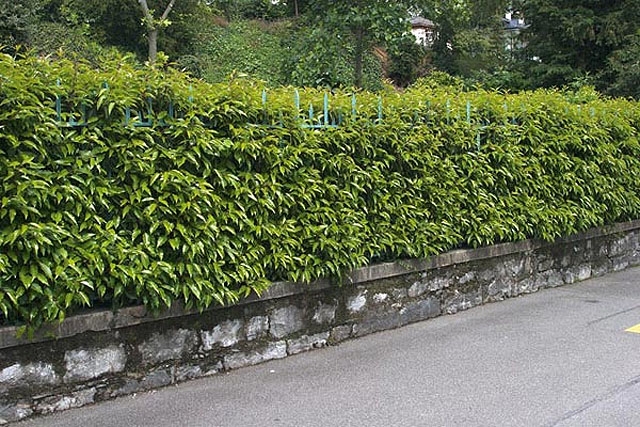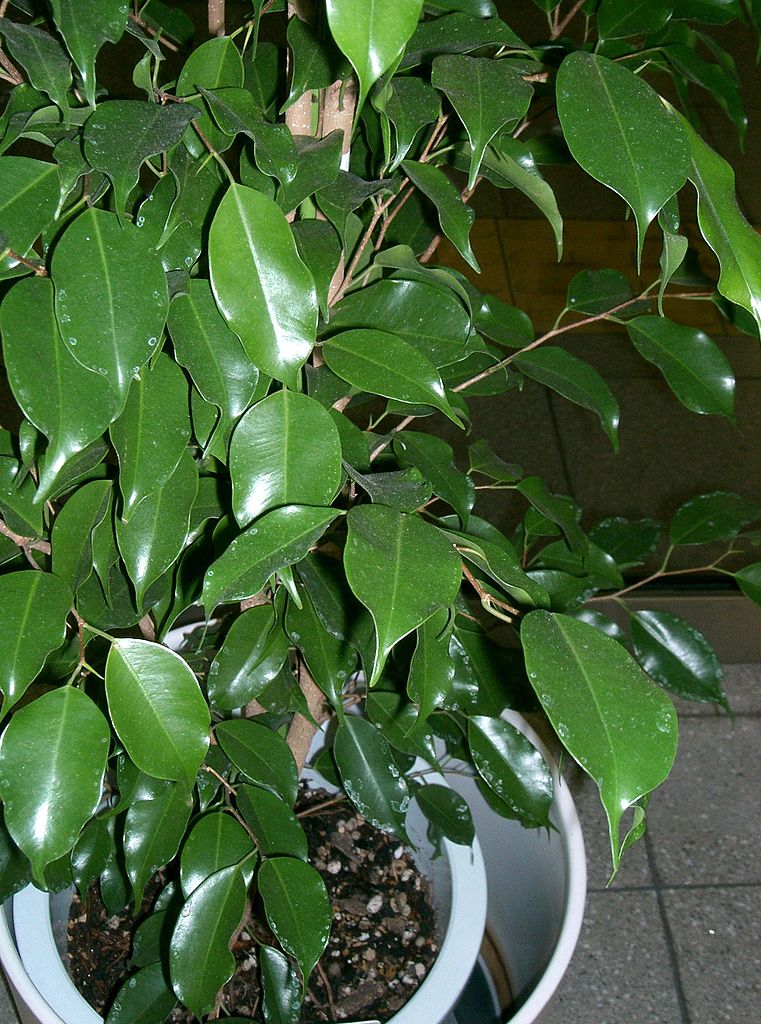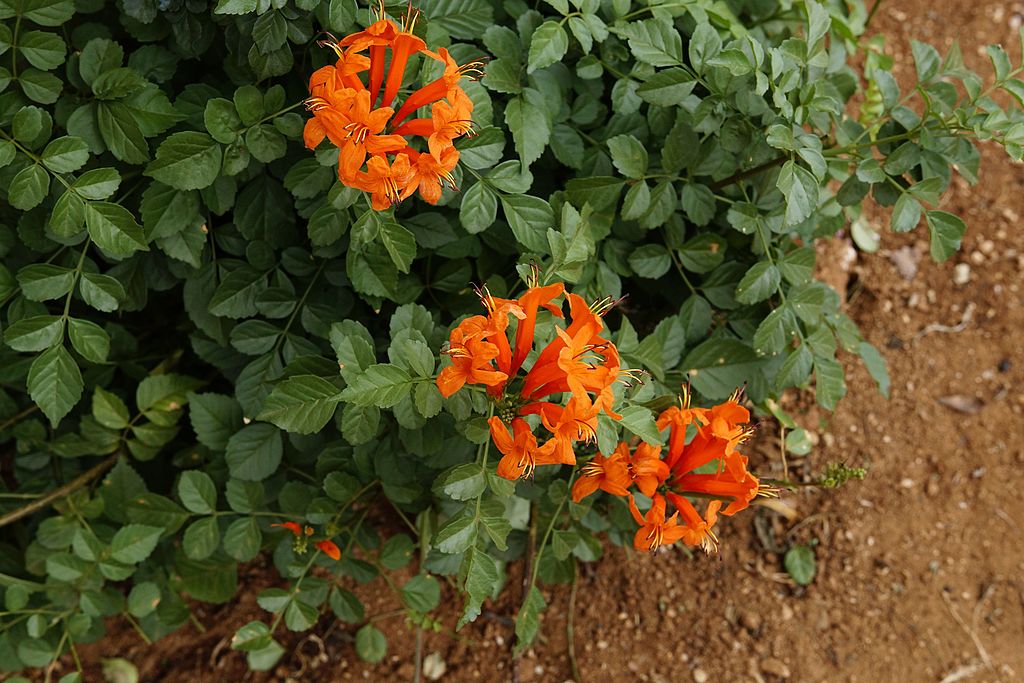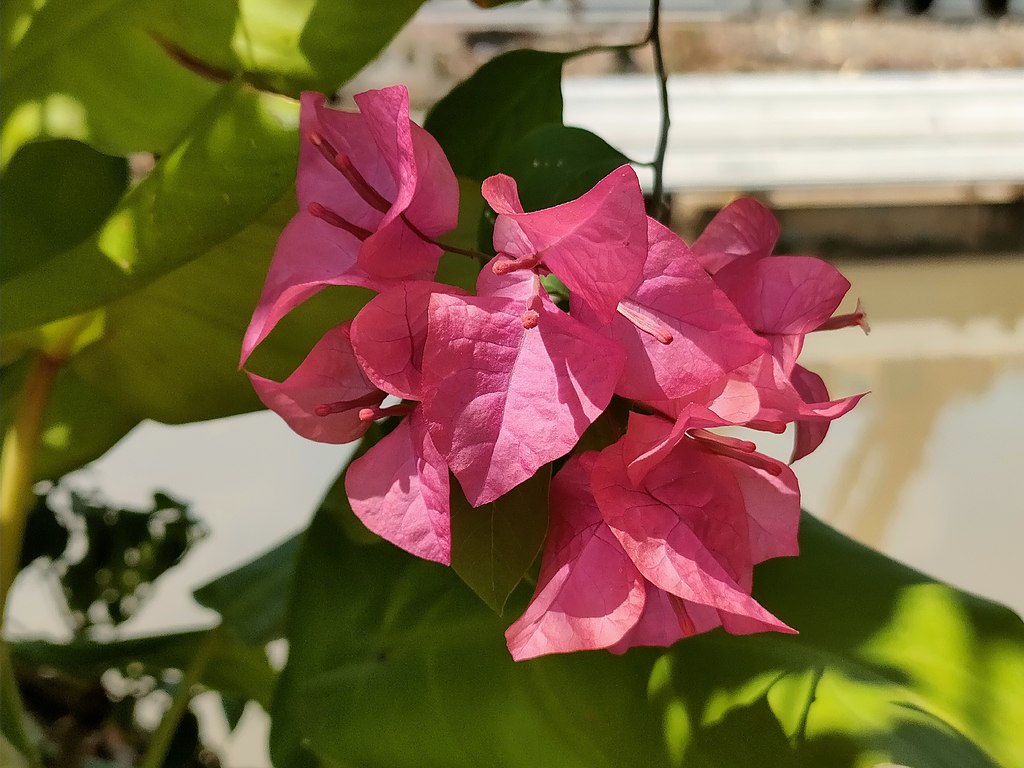Schefflera is a tropical plant genus from the Araliaceae family, commonly grown indoors as a low-maintenance houseplant, but can also thrive as an outdoor plant. Originating in Taiwan and South China (Hainan), the evergreen shrub thrives in warm, wet climates.
The Schefflera genus includes two species that make wonderful tropical houseplants:
The larger Schefflera actinophylla (also called the umbrella plant or umbrella tree) features long, shiny, oval green leaves that droop gracefully from a central stalk, resembling an umbrella. A mature Schefflera might have 12 to 16 leaflets from a single stalk, while an immature Schefflera is more likely to have four to six.
Schefflera arboricola (also called dwarf Schefflera) features smaller, glossy leaves, sometimes with creamy variegation. Other than the smaller size, it looks very similar to its taller cousin.
Schefflera plants can be grown both indoors and outdoors if you leave in a place with light climate.
When grown outdoors, this plant can reach a height of 7.5 meters and grow 1 meter in height per year. As an indoor plant, its height is limited to 2 meters.
Warning: Schefflera houseplants are toxic to both humans and animals due to high levels of calcium oxalate crystals. The sap can cause mild skin irritation, and ingesting the leaves, bark, or roots can cause nausea. Medical experts recommend wearing gloves when pruning Schefflera plants and keeping them out of reach of children and housepets.
How to grow Schefflera (umbrella plant) indoors
Schefflera plants are low-maintenance houseplants that require only basic care.
An interesting thing about this plant as a houseplant, is the fact that it acts as a natural air freshener and detoxifier. The leaves expectedly release oxygen, but they also absorb pollutants from the air.
Light
Schefflera prefers bright, indirect light. Schefflera plants can survive in medium light, they prefer at least four hours of bright indirect light. Too much light (especially direct sunlight) can burn the leaves, while not enough light will cause your plant to become leggy and malnourished. Keep the plant in a spot that doesn’t receive direct sun (like a south-facing window) or choose a spot with bright light (like an east-facing or west-facing window) and filter the light through a curtain.
Soil
Plant Schefflera in a rich, loose, well-drained potting soil.
When first potting your Schefflera, choose a pot that’s only slightly bigger than the root ball. Excess soil holds moisture, which can adversely affect the plant’s growth.
Water
Schefflera plants do not like it too wet or too dry. During the growing season, April to September, the plant requires more water than when the plant is not growing. Only water the plant until the first drops begin to drain and do so with lukewarm water. On the other side, feel the soil to ensure that it does not dry out. Over-dry soil may also be indicated by brown leaves.
Also during the growing season (April to September), spray the leaves with water frequently.
Temperature
Schefflera requires fairly high humidity and tropical temperatures. It will suffer in temperatures lower than 16 degrees Celsius. Do not expose these plants to drafts or dry heating vents. Take leaf-drop seriously on an indoor schefflera. An underwatered or cold Schefflera will begin to drop leaves quickly. If the plant loses all of its leaves, you can attempt to save the plant by moving it outdoors in the spring and watering generously.
Pruning
Your Schefflera might need to be pruned occasionally, especially if it is not getting quite enough light. Cut off what you feel is overgrown or appearing leggy. Schefflera houseplants rebound quickly from pruning and will reward your efforts. The result will be a fuller and bushier plant.
How to grow Schefflera (umbrella plant) outdoors
A schefflera plant grown outdoors, can reach a height of 7.5 meters, with a growth rate of 1 meter per year.
Outdoor grown schefflera plants usually bloom. Indoor plants they do not bloom.
Light
Schefflera prefers bright, indirect light. Choose a spot in the garden that has bright light but not direct sun, like under a patio cover or under a tree.
Alternatively, you can plant it in a position where it will get full sun in the morning or evening but have light to partial shade during midday.
Never place a Schefflera in direct, full sunlight because the intense sun can burn the leaves.
Soil
To plant schefflera in your garden, choose a spot with a well-draining, sandy loam soil with a slightly acidic pH. Avoid planting in an outdoor location where the soil becomes too wet or waterlogged.
Incorporate plenty of well-rotted compost, leaf litter, or other organic amendments. Remember, in its native range the plant would be growing in the humus-rich soil that is nurtured by a constant supply of overstory leaves, animal droppings, and constant moisture. It is necessary to duplicate that rich soil as much as you can for the best Schefflera growth.
Water
Water regularly during the growing season (April to September). Cut back on water during the winter months. Overwatering a Schefflera plant will eventually kill it. Yellow and dropped leaves are a sign that you might be watering too much.
Temperature
Schefflera will tolerate 2 to 41 degrees Celsius without chilling or heat damage, but best growth and quality occur between 18 and 32 degrees Celsius.
Identify and treat problems with Schefflera plants
You will find a great source on how to identify and treat problems of an Schefflera plant in: Schefflera Production Guide from Mid-Florida Research and Education Center.
Yellowing Leaves
Overwatering is often the cause when your Schefflera’s leaves turn yellow. Try watering less to see if this helps. If not, your plant might not be receiving enough light so move it to a brighter location.
Brown Spots on Leaves
Underwatering is likely the cause for spots on your Schefflera. In that situation, water your plant more regularly during the growing season. A best practice is to water the plant deeply and allow the soil to dry out before before giving it another deep watering.
Greek name: Σεφλέρα.
Sources: https://www.valentine.gr/schefflera_gr.php, https://www.masterclass.com/articles/schefflera-plant-guide, https://www.ambius.com/learn/plant-doctor/ultimate-guides/caring-for-the-schefflera-plant/, https://www.gardeningknowhow.com/houseplants/schefflera/outdoor-schefflera-care.htm
Tags: ORNAMENTAL PLANTS

